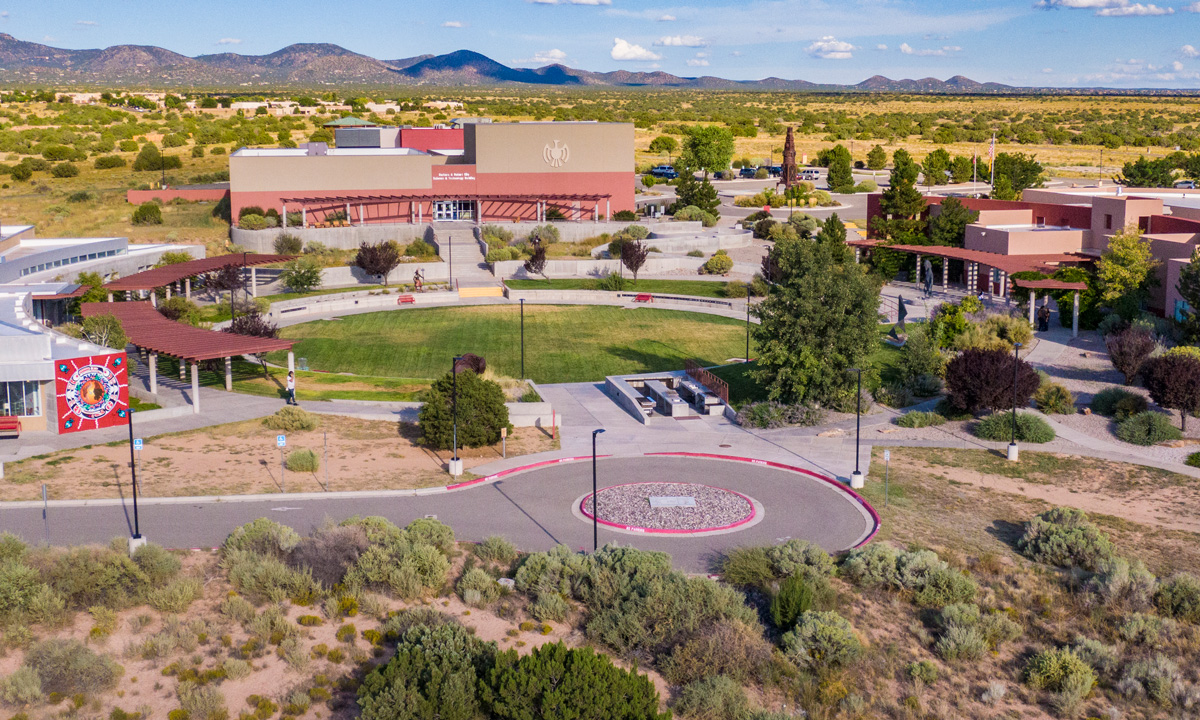Supreme Court Ruling Won’t Affect Tribal Colleges, Universities
Tribal colleges and universities will remain open-door institutions despite court’s decision to strike down affirmative action in higher education.

Get stories like this delivered straight to your inbox. Sign up for The 74 Newsletter
Although the U.S. Supreme Court effectively ended affirmative action in college admission decisions with its June 29 decision, the ruling will not affect tribal colleges and universities, administrators said.
The Supreme Court effectively ruled 6-3 in the case Students for Fair Admissions, Inc. v. President and Fellows of Harvard College.
The ruling means most colleges and universities can no longer consider race when it comes to the admission process.
However, that won’t affect tribal institutions.
“Nothing is going to change at tribal colleges, and tribal colleges are open-door institutions. They’ve always been open-door institutions. That’s going to stay their policy,” said president and CEO of the American Indian Higher Education Consortium Carrie Billy, Diné. “They are place-based institutions, culturally grounded, chartered by their tribes or the federal government, but serving the local community, and they’re going to continue serving that community regardless of this decision.”
It’s difficult to compare Native student enrollment at tribal colleges and universities to mainstream institutions, Billy said.
“TCUs are required to collect information based on a student’s enrollment in a federally recognized Indian tribe,” she said. “Only a handful of other institutions are required to collect this type of data, and no institutions except TCUs are required by the federal government to verify that they are only counting as ‘American Indian/Alaska Native’ those students who can document their enrollment status.”
Most, if not all, mainstream colleges and universities rely entirely on self-reporting when it comes to determining tribal identity of students. This means if a Native student doesn’t indicate they are a tribal citizen, then they are not counted as such. This policy can be flawed, Billy said.
Nonetheless, the high court’s decision will impact Native students attending mainstream institutions, which concerns Billy.
“Our concern is for those students, you know, our children, grandchildren, brothers, sisters, parents, who attend other institutions of higher education and also for you know, just for all people of color, and underserved communities. Everyone deserves an equal access to affordable higher education,” she said. “So we’re very concerned about that.”
Data from 2016 from the American Indian Higher Education Consortium showed that tribal colleges and universities accounted for 67 percent of American Indian/Alaska Native student enrollment in higher education compared to mainstream universities that collected similar data.
Billy added that she has not heard much from Native students, which she attributes to the decision having been handed down during the summer, and she expects to hear more after the school year starts.
At the time of the decision, national Native organizations shared their disapproval. The American Indian Higher Education Consortium said the court essentially attempted to “slam doors of higher education shut” but promised that its advocacy on behalf of Native students would not stop.
“We were here before affirmative action, and we will be here – strong, resilient, and sovereign – after the Supreme Court’s decision this week,” a statement from the organization said.
Fawn Sharp, National Congress of American Indian president, Quinault, echoed that sentiment, calling the decision “exceptionally disappointing.”
“While everyone deserves to be considered on their merits, it does more harm than good to ignore the fact that Native people were subject to genocide, colonization, and assimilation,” Sharp said in a June 30 statement. “Only when these realities are confronted head-on will meaningful progress be made, which is why the National Congress of American Indians will continue to fight to bring visibility to these issues and look for solutions to ensure future generations have access to the education so many of our past generations did not.”
The decision comes closely after a trend in the last couple of years in which universities or states adopted tuition waiver policies directed specifically at enrolled tribal citizens. Billy said these waivers are tailored specifically to Native Americans not as a racial group, but as a nod to the political relationship between the states and the tribes.
A number of states and higher education institutions have long offered some type of tuition waiver for Native students. Both the Montana and California university systems offer a waiver.
The University of Maine has had one in place since the 1930s, and more recently, the University of Arizona offered free tuition to Native students enrolled in a federally recognized tribe in Arizona. Oregon State University offers in-state tuition to any student of a federally recognized tribe.
“The tuition discounts that state governments enact are for members of either federally recognized tribes or state-recognized tribes in their state that’s, again, a political relationship. It’s not a race-based program,” Billy said. “So this decision should have no effect on them.”
Partnerships between public institutions and tribes are going to be important moving forward. Appearing on Native America Calling in early July to discuss the decision, Julia Wakeford, policy director for the National Indian Education Association, said the ruling will show how serious colleges and universities are about ensuring diversity on their campuses.
“A number of these universities and colleges have come out saying that they stand by and will do whatever they can within the letter of the law, to make sure that there remains diversity on their campuses,” said Wakeford, who is Mvskoke and Yuchi.
This story was originally published at Indian Country Today.
Get stories like these delivered straight to your inbox. Sign up for The 74 Newsletter

;)